https://feeds.feedblitz.com/~/623168752/0/convinceandconvertconsulting/

To increase conversion rates on your website, you need to understand its current state.
What is your overall conversion rate? Which pages are performing well (according to the numbers)?
Which pages are performing poorly? What tests can be carried out based on these analyses? What can you learn about your audience and your website from all this data?
Numbers tell many stories about your website. But without the right analysis, it’s difficult to get the vital pieces of information. What numbers are important? What should you look for?
In this short guide, I’ll show you how to improve your conversion rates by paying attention to the right metrics from your web analytics. Here are the 7 points you need to keep in mind:
1. Study visitors’ demographic data
From your website demographic data, you’ll get insights into who your visitors are, what might interest them, and their behavior on your website. With a tool such as Google Analytics, you’ll get a wealth of data about your visitors.
For instance, common demographic data include:
- Location
- Age
- Gender
- Interests
If you run a business where your ideal buyers live in a specific location, then you’d want to know how those visitors behave on your website. Are they converting? What’s their conversion rates compared to visitors from other locations?
You can create segments on Google Analytics to make these comparisons. Another example is the age groups. Do older visitors convert better than younger visitors? What of 18 – 24 versus 25 – 34-year-olds?
You can even go further and include gender. For a page selling a gift item for men, what’s the conversion rates of female versus male for that page? This would help tweak your message on these pages.

Analyze conversion rates in Google Analytics based on gender.
Furthermore, you can find the interests of your visitors. Depending on how deep you can dive, there’s a lot of information you can uncover from your analysis. This will provide information about the conversion rates of different demographic groups and where you need to improve.
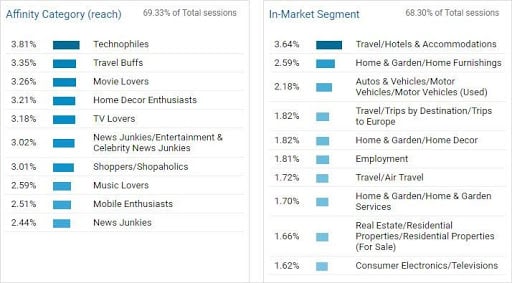
Use Google Analytics to see discover the interests of your visitors. Use this information to see whether different demographic groups are converting.
2. Use data to understand visitors
When you go through numbers about your website performance, one of the main objectives is to understand your visitors. What does their behavior say about them? What does their demographic data mean?
Some important pieces of data to track to understand your visitors include:
- Pages viewed
- Time on page
- Major traffic sources
- Best sources for conversions
- Location
- Gender
- Language
These details and more will help you understand your page visitors. More so, you’ll be able to predict their needs better and make attractive offers. One tool that allows you to understand your visitors is CANDDi.
Interestingly, this tool actually identifies your visitors. Thus, you can find more unique details such as their name, employer, time on site, and their activities.
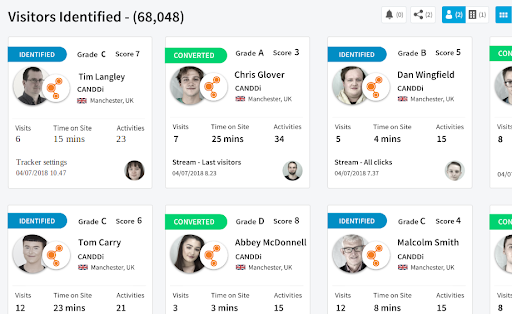
CANDDi is a tool that identifies your website visitors. You can see unique details such as their name, employer, time on site, and their activities.
As a result, it’s easy to identify your leads and understand their needs based on their data. Furthermore, you can use these pieces of information to build buyer personas for your business.
In a nutshell, understanding your audience will help refine your messages for your ideal audience and increase conversions.
3. Analyze landing page data
If you’re looking to increase conversion rates, you have to pay special attention to your landing pages because they account for most of your conversions.
According to WordStream, landing pages across various industries have a median conversion rate of 2.35%. Normally, this value will vary across different industries.

Landing pages across various industries have a median conversion rate of 2.35%. This value varies across different industries.
No matter your page conversion rate, you need to increase it. But first, you have to analyze the data. With a tool like Instapage, you can analyze details about your landing page performance. These include:
- Time on page
- Number of visits
- Number of leads captured
- Conversion rates
Apart from having an overall website conversion rate, you need to analyze individual landing pages for your marketing campaigns. By doing this, you’ll understand how effective each campaign has been in terms of conversions. More so, you get insights to make changes to your paid ads and their landing pages.
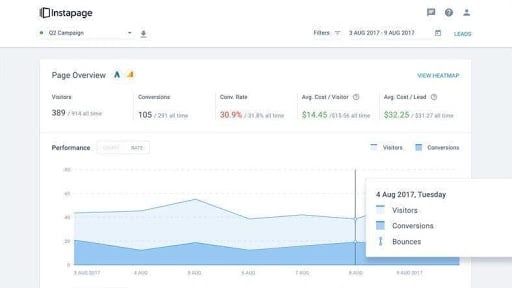
With a tool like Instapage, you can your landing page performance.
Beyond those numbers, you can also analyze user behavior on your landing pages. Do they read all your page content? Where do they click?
For instance, a tool like Crazy Egg allows you to see how users scroll through your page with the scroll map. Also, you have the heatmaps which display where visitors click on your page.
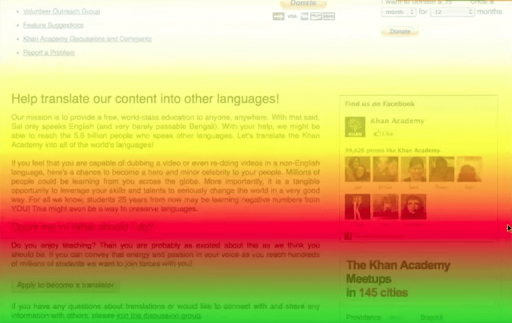
Crazy Egg shows you how users scroll through your page with the scroll map. Heatmaps display where visitors click on your page.
Another useful feature is the recordings, which show how users navigate your landing pages. With these pieces of data, you’ll get useful insights to improve conversions.
4. Analyze your page speed
Over the years, page speed has become a vital part of web experiences. Due to the development in technology, visitors want your pages to load immediately. Otherwise, they’ll bounce off your page.
According to a Google study, the probability of a bounce increases by 32% once your page loads for 3 seconds. To further illustrate, another study found that Amazon could lose $1.6 billion in annual sales if its page loads 1 second slower.
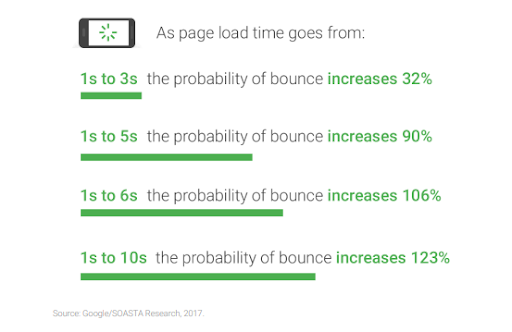
A study by Google found that bounce rates increase the longer a page takes to load.
Fortunately, a tool such as Pingdom allows you to test your page speed. Depending on your ideal audience’s location, you can test from different locations to see how fast your visitors can access your website.
Likewise, Pingdom provides recommendations on changes you can make to increase your website speed.
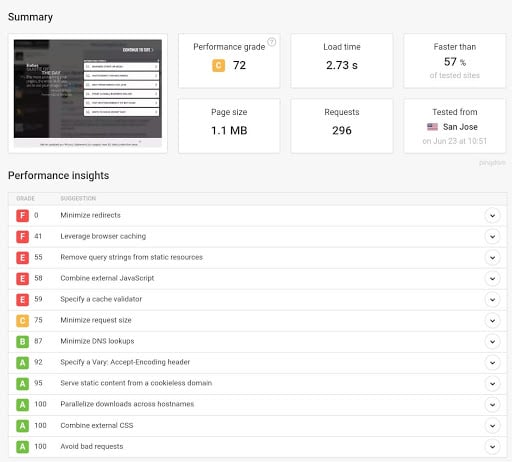
Pingdom provides recommendations on changes you can make to increase your website speed.
Apart from that, Google Analytics also provides speed analysis through the page timings report. Here, you’ll see the load time of various pages. You can also compare the load time to the exit rate or bounce rates.
With these insights, you can take steps to increase your website speed.
5. Analyze visitors’ behavior flow
How do users navigate your website pages? With the behavior flow, you can see how visitors move from one page to another.
Also, an important data point to look out for is the entry and exit pages. Usually, the homepage will account for most entries. But apart from that, what other pages account for entries?
You can use the “Behavior Flow” feature in Google Analytics to see how visitors navigate your website. Apart from viewing entries and exits, drop-offs are a vital metric.
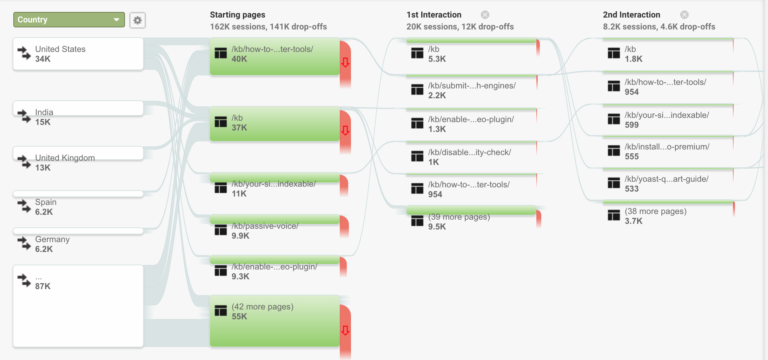
Use the “Behavior Flow” feature in Google Analytics to see how visitors navigate your website.
What pages have low or high drop-offs? You can continue to investigate these pages and make necessary changes to increase conversions.
Mixpanel also provides the “Flow” feature that shows how your customers navigate your website. The conversion rate flow lets you see your conversion rates and how different criteria affect results.
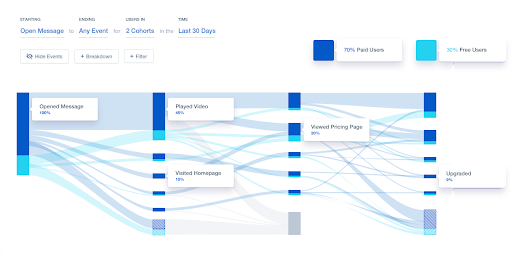
Mixpanel provides a “Flow” feature that shows how your customers navigate your website.
You can see the top paths to conversion which displays your most effective marketing campaigns.
6. Shopping behavior analysis
If you run an eCommerce business, cart abandonment is one constant nightmare. Think about it; the average cart abandonment rate from 33 studies is 69%.
Therefore, you need to optimize your checkout process. The shopping behavior analysis in Google Analytics provides details about the number of sessions in each page of the buying process.
With this, you’ll see where visitors drop off during the buying process. Furthermore, it becomes easier to identify pages that need urgent attention.
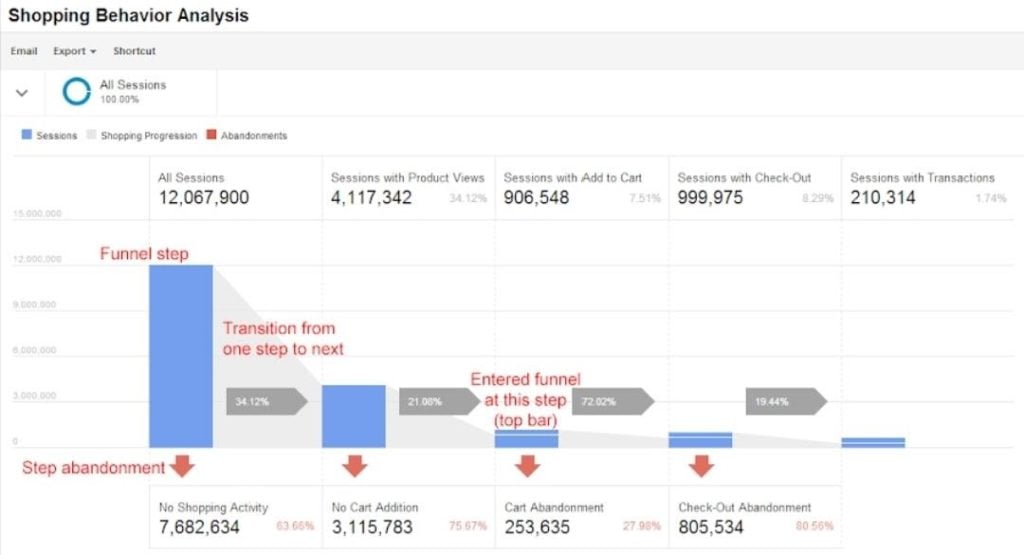
The shopping behavior analysis feature in Google Analytics provides details about the number of sessions in each page of the buying process.
However, it’s difficult for these numbers alone to provide the full picture. For instance, do visitors from a particular traffic source account for the majority of drop-offs?
To analyze the problem further, you can create segments of traffic to these pages, such as:
- Paid search traffic
- Organic traffic
- Social media traffic
- Tablet and desktop traffic
- Direct traffic
- Email traffic
- Returning visitors
- Location
- Products
After doing this, you’ll get a clearer view of the factors responsible for the drop-offs. Also, you can investigate those pages to make necessary adjustments.
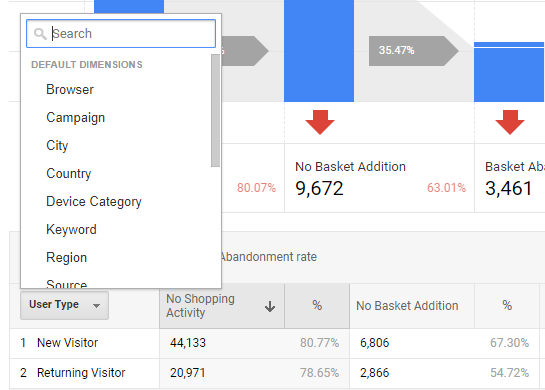
Get a clear view of the factors responsible for the drop-offs.
7. Run A/B tests for pages
One of the most important tasks for improving conversion rates is carrying out A/B split tests. And it’s a continuous task if you want to increase conversion rates.
While analyzing data of different pages on your website, you also form hypotheses. These are changes you can make to improve conversion rates.
For instance, you can change page elements such as:
- Page copy
- Location of CTA button
- Images/videos
- Background images
How do you validate or invalidate these hypotheses? A/B split testing. However, to run proper A/B tests, you need the right tools.
A tool such as VWO can help to run different types of A/B tests. At the end of your A/B tests, you have access to your results. Furthermore, VWO allows you to segment your results based on user segments.
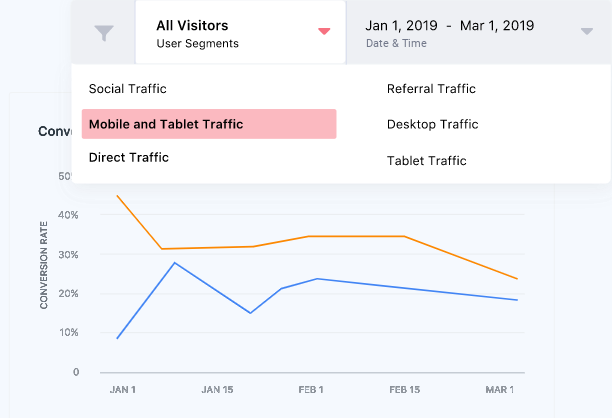
A tool like VWO will show you how mobile and tablet traffic convert compared to the average. These insights would help improve your conversion rates and set up future tests.
For example, how did mobile and tablet traffic convert compared to the average? These insights would help improve your conversion rates and set up future tests.
Conclusion
Today, there are so many numbers that provide a clear picture of your website performance. However, the major challenge is to find the right numbers and interpret them effectively.
By following the steps here, you’ll gain more insights into your conversion rates and possible actions to take in future campaigns.
The post How to Increase Conversion Rates With Web Analytics appeared first on Content Marketing Consulting and Social Media Strategy.









 Mark Schaefer is the chief blogger for this site, executive director of Schaefer Marketing Solutions, and the author of several best-selling
Mark Schaefer is the chief blogger for this site, executive director of Schaefer Marketing Solutions, and the author of several best-selling 

